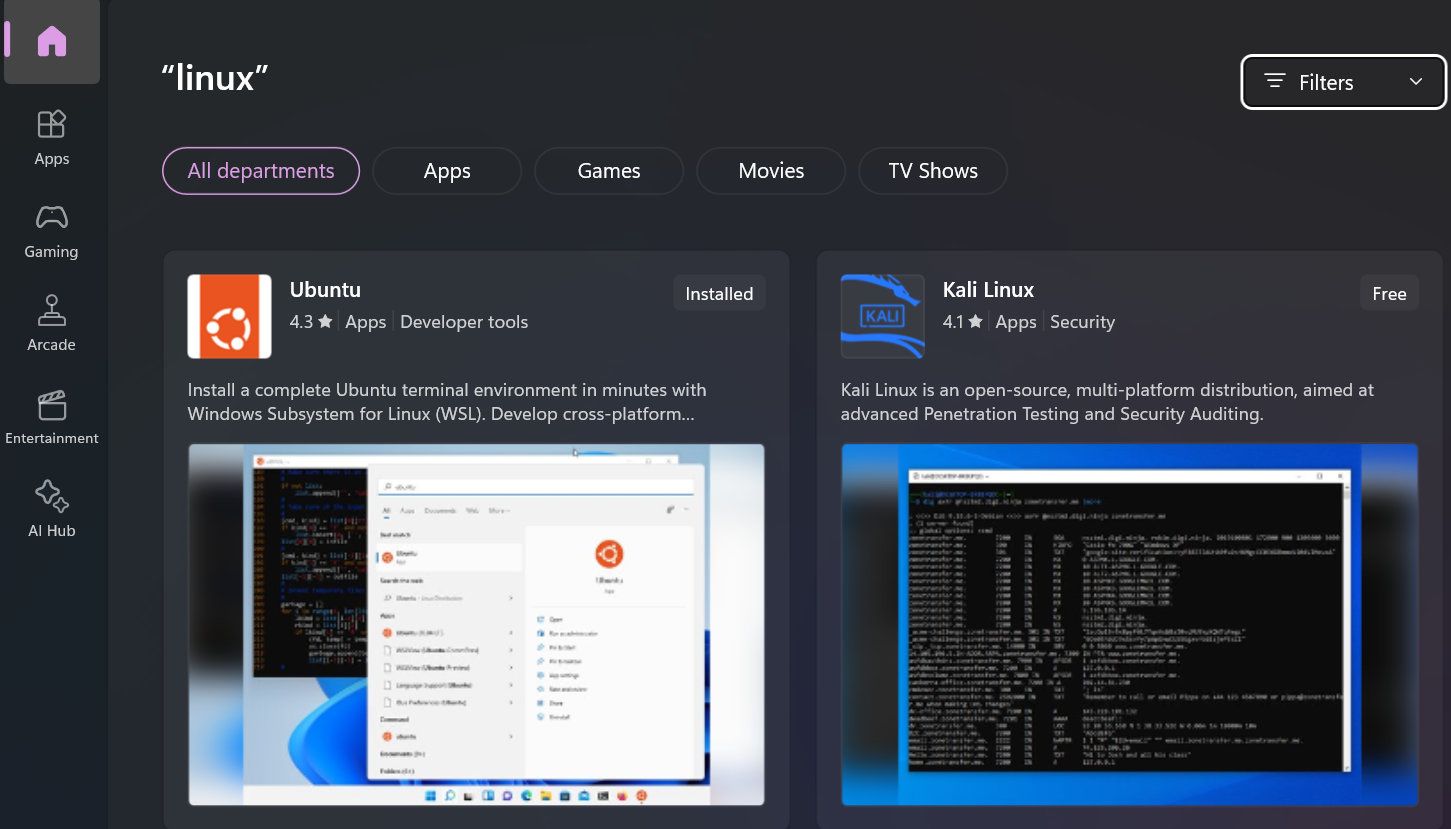
Examining WSL's Influence on Linux Adoption

Examining WSL’s Influence on Linux Adoption
Since desktop Linux has existed, fans and detractors alike have either hoped for or laughed about the “year of the Linux desktop.” Now it seems that desktop Linux is starting to slowly gain market share, but why?
Do we have Microsoft and the Windows Subsystem for Linux to thank for introducing Linux to more people and getting them interested in it? Is Microsoft creating its own competition?
Desktop Linux Is (Finally) Gaining Market Share
While many people assumed the year of the Linux desktop is far away and may never come, the little operating system that could has gotten closer than ever before.
While it still has a long way to go, Linux reached a desktop market share of 4% at the end of February 2024. This is the biggest slice of the pie that the operating system has ever had.
Of course, while this pales in comparison to Windows, it does raise the question of why. There are plenty of reasons why Linux could catch up to Windows , at least theoretically, but these new users have to come from somewhere.
It’s unlikely that people completely new to computers are choosing a Linux install as their first foray into computing, and hopping between different Linux distributions wouldn’t count. So the answer must lie elsewhere.
Do We Have Microsoft to Thank for This Linux Boost?
2016 was when Microsoft first launched the Windows Subsystem for Linux. But at launch, it wasn’t particularly easy to use and it had some usability issues. While some people (like myself) dove in right away, it wasn’t until the launch of WSL 2 that the use of Linux on Windows became popular. This made it simple to run Linux commands on Windows .
Windows 10 and 11 make it incredibly easy to start using Linux on your Windows computer. Sure, it takes a bit of work to get started with WSL —but once you’ve done the background work, it’s easy.
All you need to do to install a new Linux distribution is search for it in the Windows Store. If the distribution you’re looking for can’t be found there, chances are pretty good you’ll find instructions on how to install it online. While there are other ways to get similar Linux features on Windows , they’re much more fiddly.

With this ease of sampling different varieties of Linux, it’s easy to see how those who end up liking Linux could want to go to the next step and install it on their computer in the traditional sense.
Is WSL Actually the Linux Desktop We Need?
The final question is, if some of these new Linux users are coming from Windows, how many will stick around? One of the biggest problems with Linux has always been software compatibility, and that’s still an issue. Even though more games than ever run on Linux, there are still plenty that only run on Windows.
For many people, the Windows Subsystem for Linux is the final evolution of Linux on the desktop. Not without irony, but still the much easier option for the vast majority of people.
Do we have Microsoft and the Windows Subsystem for Linux to thank for introducing Linux to more people and getting them interested in it? Is Microsoft creating its own competition?
Also read:
- [New] 2024 Approved Antique Cinematography in the Digital Realm
- [Updated] Vanishing Acts How to Blur Faces and Objects Online for 2024
- Easy Steps to Retrieve Lost Shortcut Icons From the Hard Disk in Various Versions of Windows
- Eliminating Failed Capture on Your PC' Writes
- Empowering Offline Windows Maintenence and Improvement
- Eradicating Windows' Conflicting Camera Use (0xA00F4243)
- Fixing the 'Black Screen' Issue in Elden Ring at Launch
- In 2024, Fake the Location to Get Around the MLB Blackouts on Nubia Red Magic 9 Pro | Dr.fone
- Reboot to Rejuvenate Drag & Drop on Win11 PCs
- Reimagine Your Digital Life: 4 Key Strategies to Refine Your Facebook Viewing
- Revitalize Family Safety: Overcoming Common Windows Hurdles
- Reviving Depleted Windows Time Servers: Essential Strategies
- Solutions for Disabling Impending License Expiry in Windows
- Speed Up Your Startup Experience on Windows 11 - Proven Methods Revealed
- Step-by-Step Tutorial: Download and Set Up DisplayLink on Windows 10
- Tips for Restoring HP Print Functionality
- Title: Examining WSL's Influence on Linux Adoption
- Author: David
- Created at : 2024-12-20 17:04:41
- Updated at : 2024-12-22 16:15:47
- Link: https://win11.techidaily.com/examining-wsls-influence-on-linux-adoption/
- License: This work is licensed under CC BY-NC-SA 4.0.